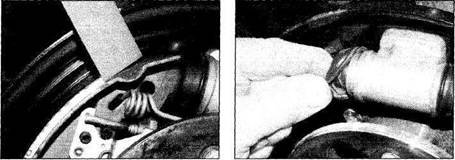
КАТЕГОРИИ:
Архитектура-(3434)Астрономия-(809)Биология-(7483)Биотехнологии-(1457)Военное дело-(14632)Высокие технологии-(1363)География-(913)Геология-(1438)Государство-(451)Демография-(1065)Дом-(47672)Журналистика и СМИ-(912)Изобретательство-(14524)Иностранные языки-(4268)Информатика-(17799)Искусство-(1338)История-(13644)Компьютеры-(11121)Косметика-(55)Кулинария-(373)Культура-(8427)Лингвистика-(374)Литература-(1642)Маркетинг-(23702)Математика-(16968)Машиностроение-(1700)Медицина-(12668)Менеджмент-(24684)Механика-(15423)Науковедение-(506)Образование-(11852)Охрана труда-(3308)Педагогика-(5571)Полиграфия-(1312)Политика-(7869)Право-(5454)Приборостроение-(1369)Программирование-(2801)Производство-(97182)Промышленность-(8706)Психология-(18388)Религия-(3217)Связь-(10668)Сельское хозяйство-(299)Социология-(6455)Спорт-(42831)Строительство-(4793)Торговля-(5050)Транспорт-(2929)Туризм-(1568)Физика-(3942)Философия-(17015)Финансы-(26596)Химия-(22929)Экология-(12095)Экономика-(9961)Электроника-(8441)Электротехника-(4623)Энергетика-(12629)Юриспруденция-(1492)Ядерная техника-(1748)
Measure the thickness of the brake shoe friction material
|
|
|
|
To your health. DO NOT blow it out with compressed air and DO NOT inhale it DO NOT use petrol or solvents to remove the dust Brake system cleaner should be used to flush the dust into a drain pan. After the brake components are wiped clean with a damp rag, dispose of the contaminated rag(s) and solvent in a covered and labelled container. Try to use non-asbestos parts whenever possible.
VVT-i models -
Every 16 000 km or 12 months
VVT-i models -
Every 15 000 km or 12 months
Non-VVT-i models -
1 Slacken the front roadwheel bolts. Firmly apply the handbrake, then jack up the front of the car and support it securely on axle stands (see Jacking and vehicle support). Remove the front roadwheels.
2 For a quick check, the pad thickness can be carried out via the inspection hole on the front caliper (see Haynes Hint). Using a steel rule, measure the thickness of the pad friction material. This must not be less than the specified minimum given in the Specifications.
3 For a comprehensive check, the brake pads should be removed and cleaned. The operation of the caliper can then be checked,
| every | 000 km | or 2 years | |||
| Warning: Brake | dust | produced | |||
| by | lining | wear | and | deposited | |
| on | brake | components may | |||
| contain | asbestos, | which | is | hazardous |

1 Refer to Chapter 9 and remove the rear brake drums.
2 Note the thickness of the lining material on the rear brake shoes (see illustration) and look for signs of contamination by brake fluid and grease.
3 If the lining material is within 1.0 mm of the recessed rivets or metal shoes, renew the brake shoes. The shoes should also be renewed if they are cracked, glazed (shiny lining surfaces) or contaminated with brake fluid or grease. See
Chapter 9 for the renewal procedure.
4 Check the shoe return and hold-down springs and the adjusting mechanism to make

5 Check the wheel cylinders for leakage by carefully peeling back the rubber boots (see illustration). If brake fluid is noted behind theboots, the wheel cylinders must be renewed
(see Chapter 9).
6 Check the drums for cracks, score marks, deep scratches and hard spots, which will appear as small discoloured areas. If imperfections cannot be removed with emery cloth, the drums must be resurfaced by an automotive engineering workshop (see Chapter 9 for more detailed information).
7 Refit the brake drums (see Chapter 9).
8 Refit the wheels and nuts.
9 Remove the axle stands and lower the vehicle.
10 Tighten the wheel nuts to the specified torque.
|
|
|
|
|
Дата добавления: 2014-12-23; Просмотров: 482; Нарушение авторских прав?; Мы поможем в написании вашей работы!